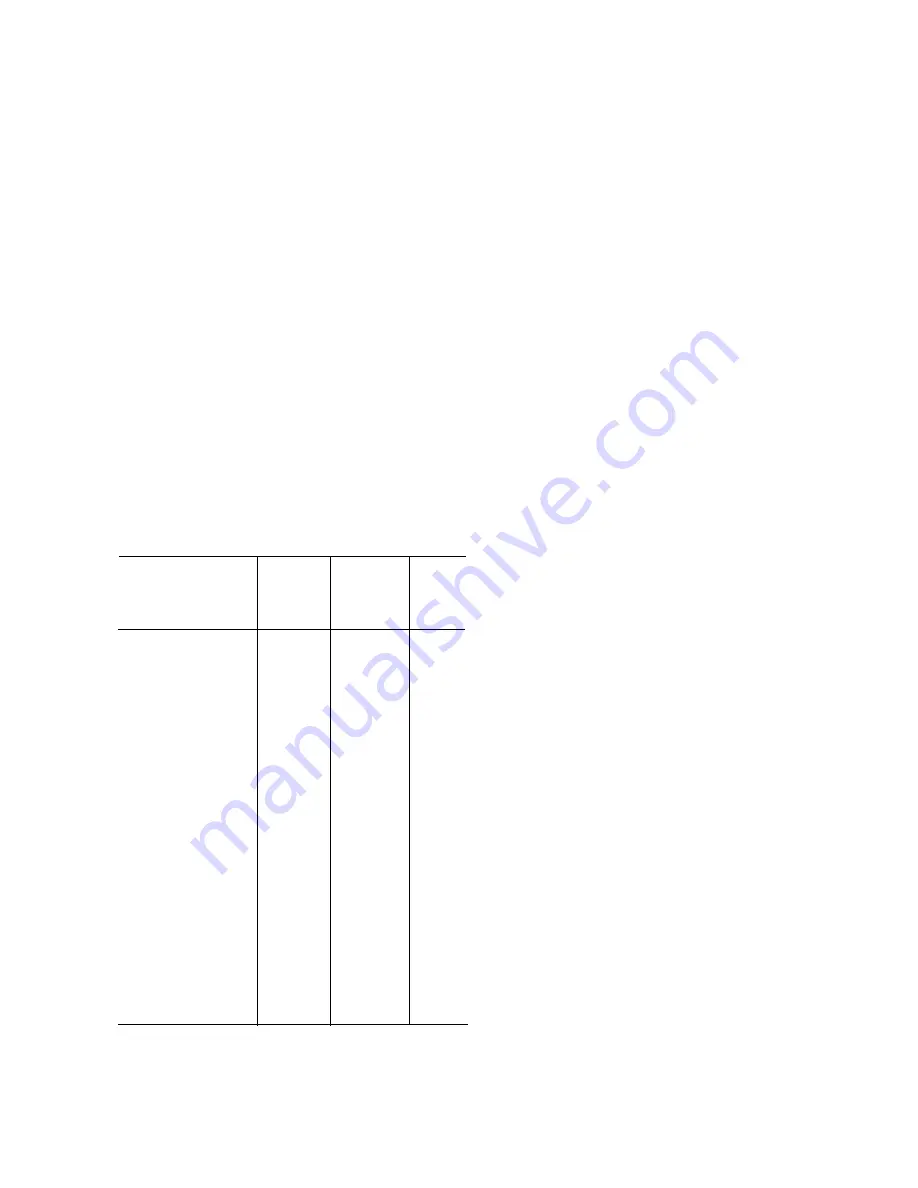
sealed at the factory and need no lubrication for the life
of the motor.
5 .
The control wiring should be ch ecked for integrity of
insulation. The conduit and control cabinet should be
checked to assure that they are weatherproof. Control
power supply voltage should be checked with respect to
the wiring diagram.
6.
Inspect the paint finish for scratches or wear that ex
pose the prime coat or the tank steel itself. Repair paint
flaws as soon as prac tical. Local climates vary too widely
to give definite recommendations as to frequency of re
painting.
7.
Using an infrared scanner , inspect the operating trans
former's surface temperature. Be sure to check bushing
terminals and cooling fins. At
5 0%
or less of rated load,
uneven heat distribution on cooling fins is common. Any
unusually hot or cold surface should be investigated.
Table
3 .
Recommended Maintenance Schedule
Just Prior One Month Once
To
After
a
Check Period
Energizing Energizing Year
1. Gauge Readings
X
X
X
2 .
Bolted Con-
nections
X
3.
Tank Leaks
X
X
4.
Fan Operation
X
X
5 .
Control Wiring
&
Circuits
X
X
6.
Paint Finish
X
X
7 .
Surface
Temperature
with Infrared
Scanner
X
X
8.
Liquid Dielectric
Test
X
X
8 .
Liquid Dielectric Test. It is recommended that a liquid
sample be taken periodically and tested. The dielectric
strength of the liquid should not drop below
26
Kv.
27
If the dielectric strength drops below
22
Kv, the liquid
should be filtered. Sampling and testing procedures can
be found i n Instruction Book
45-063 - 1 00
for OIL,
LB.
45 -063 - 1 02
for SILICONE FLU ID, and LB.
47-05 3-1
for WEMCO " FR" insulating oil.
8.2 Sampling of Insulating Liquid
Care should be taken to procure a sample which fairly
represents the liquid in the tank. A sufficient amount of
liquid should therefore be drawn off before the sample is
taken to insure that the sample will not be that which is
stored in the sampling pipe. If the sample taken contains
free water , it is not suitable for dielectric tests and the
sample should be discarded. A second sample should then
be taken after at least two quarts of liquid have been
wi thdrawn. If free water still exists , the liquid should be
run through a blotter filter press and re-tested for di
electric strength .
The sample of the liquid should be taken when the unit
is warmer than the surroundings to avoid condensation
and should also be taken only on clear days.
When sampling O IL from the transformer, the sample
must come from the bottom of the tank.
When sampling SILICONE FLUID from the trans·
former , the sample may come from either the top liquid
level or the bottom of the tank.
It is recommended that a 16 -ounce amber glass con
tainer be used as a sampling receptacle so that any water
present may readily be seen. Do not use rubber gaskets
or stoppers on SIL ICONE FLUID sample bottles.
Additional information concerning handling, sampling ,
filtering , testing and reconditioning can be obtained by
ordering Instruction Book
45-063- 1 00
for OIL, Instruc
tion Book
45 -063 - 1 02
for SIL ICONE FLUID and Instruc
tion Book
47-053-1
for WEMCO "FR" through the near
est Westinghouse Sales Office.
8.3
Drying of Transformer
Occasionally , moisture will be absorbed in the windings
and insulation which a liquid filtering process will not re
move . Whether the windings must also be dried after the
liquid fl.ltering process is determined by an insulation re
sistance test. The measured insulation resistance should
be compared to factory test values. If that data is not
available, use the values in Figures
1 8
and
1 9
as a guide.








































